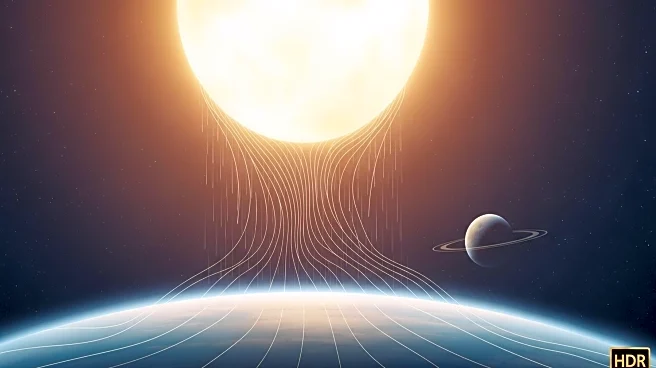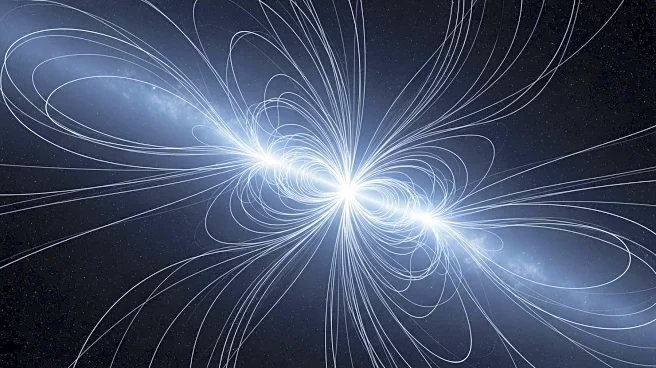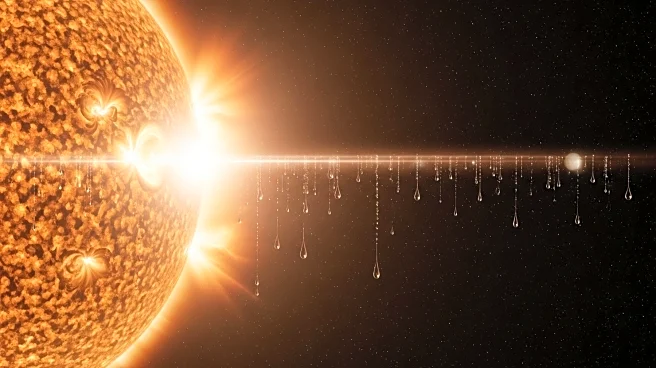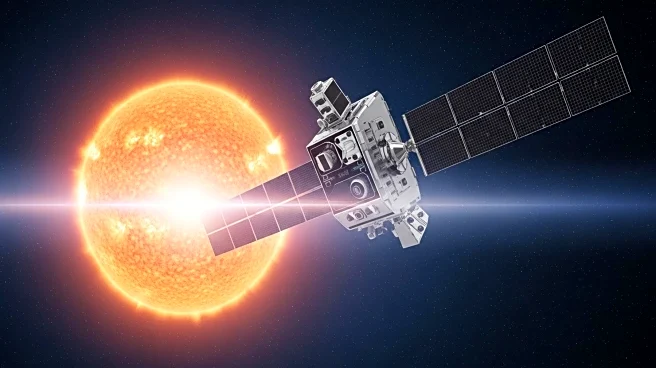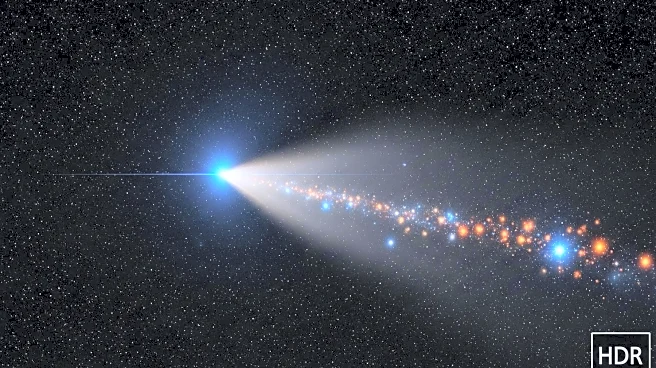What is the story about?
What's Happening?
Researchers at the University of Hawai‘i Institute for Astronomy have made a breakthrough in understanding the phenomenon of 'solar rain' on the Sun. Unlike Earth's rain, solar rain consists of cooler, denser clumps of plasma that condense in the Sun's corona and fall back towards its surface. This process, which occurs rapidly during solar flares, has puzzled scientists for years. The new study, led by graduate student Luke Benavitz and astronomer Jeffrey Reep, reveals that changes in the elemental composition of the Sun's corona are responsible for this phenomenon. Their findings, published in the Astrophysical Journal, challenge previous models that assumed a constant distribution of elements in the corona.
Why It's Important?
This discovery is significant as it enhances the understanding of solar dynamics, particularly during solar flares. Accurate models of the Sun's behavior are crucial for predicting space weather, which can have profound effects on Earth's technology and communication systems. The research suggests that previous models may have overestimated the time required for coronal rain to form, indicating a need to revisit theories on coronal heating. By acknowledging the variability in elemental abundances, scientists can develop more accurate models, potentially improving forecasts of solar activity and its impacts on Earth.
What's Next?
The findings open new avenues for research into the Sun's atmospheric behavior and energy transfer processes. Scientists will need to explore how these changing elemental abundances affect other solar phenomena and refine existing models to incorporate these dynamics. This could lead to a deeper understanding of solar physics and more reliable predictions of solar events that influence space weather.
Beyond the Headlines
The study challenges long-held assumptions about the Sun's corona, suggesting that its elemental composition is not static but changes over time. This revelation could lead to a paradigm shift in solar physics, prompting researchers to reconsider how energy is distributed and dissipated in the Sun's outer layers. The implications extend beyond solar rain, potentially affecting theories on solar wind and magnetic field interactions.
AI Generated Content
Do you find this article useful?
